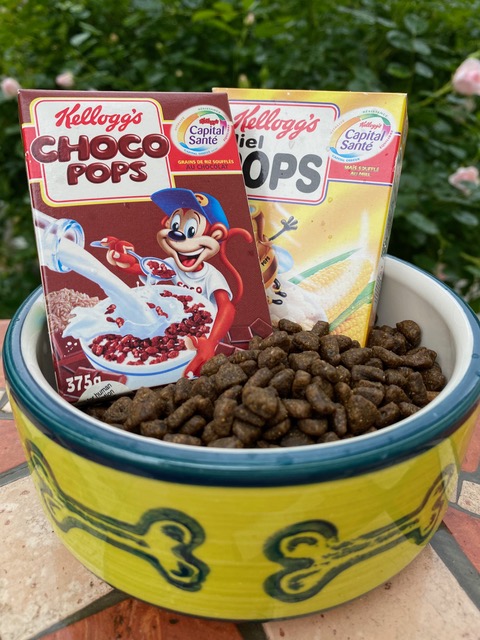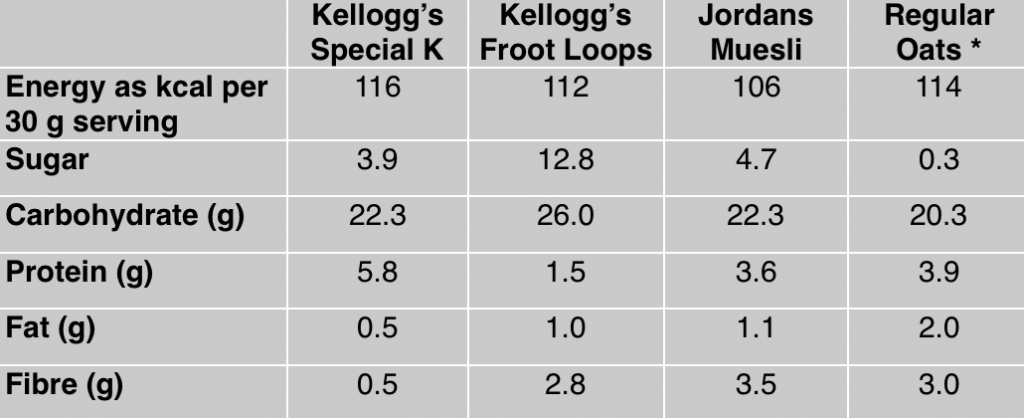Our need for extra time has reached epic heights. We subscribe to a multitude of time saving services and have homes full of gadgets. From robot hoovers (automatic vacuum cleaners) to the life saving dishwasher, we rely on being given that extra minute to apply our weary selves to that never-ending to-do list that none of the various virtual assistants like Alexa, Cortana, or Siri can take off our hands.
When it comes to eating, we have already replaced home cooked meals for ready made options and the ever popular take-out that is delivered to our front doors – already an institution even before the 2020 pandemic. Most modern homes get more mileage from their microwave ovens than the gas hob. With the ever-increasing price of fuel – be it kerosene, diesel, or gas – who can justify the expense of installing and running an AGA cooker these days?
When it comes to meals in a packet, what better option is there than breakfast cereal? Data from the National Diet and Nutrition Survey show that 69% of adults and children regularly consume breakfast cereals [1]. The continued scaremongering surrounding high cholesterol associated with egg, red meat, and saturated fat consumption further fuels the nation’s desire for an easily accessible alternative.

If I choose a cereal as opposed to a home cooked feast, will I be optimally nourished?
Whether in the form of a breakfast cereal of a breakfast bar, it seems that added vitamins and minerals in the form of fortification is generally applied across the board. The least fortified products are reported to be ‘muesli’ and ‘oats’ [2]. Commercial breakfast cereals are fortified with a range of vitamins and minerals including some B vitamins, vitamin C, vitamin D, vitamin E, beta carotene (a precursor of vitamin A), and zinc [3]. Calcium and Iron are also regularly used in some products [2].
According to a Nutrition Bulletin published by the British Nutrition Foundation, “Breakfast cereals can provide a healthy start to the day for adults and children alike [4].” Before you rejoice in that snippet of good tidings, be careful not to assume that all the options available offer the same level of optimal nutrition. Here is a quick comparison between a select few options.

Sources: Nutrition Coordinating Center Food & Nutrition Database (NCCDB) and CRON-O-Meter Community Database (CRDB)*
Why compare breakfast cereal to kibble?
Kibble is defined as ground meal shaped into pellets, especially for pet food and generally served with a separate bowl of water. Breakfast cereal is made up of processed grains and is typically served with milk (or milk alternatives).
Data suggests that pet owners tend to choose kibble for convenience and price. Similarly breakfast cereals tend to be chosen as it requires no preparation time, is easy for even younger children to dish up without assistance and is marketed as containing essential vitamins and minerals.
Flint River Ranch puppy & adult dog kibble is described as:
“The oven-baked kibble is highly palatable and digestible with a great aroma and a taste your dog will love! It is a highly nutritious diet, with choice proteins and amino acids to ensure your dog’s healthy growth and energy levels are well maintained. In addition, it is fortified with special vitamins & minerals to promote and maintain healthy bones, muscles, and proper body development [5].”
Kellogg’s state the following about their very popular breakfast options:
“Special K cereals & cereal bars (excluding Biscuit Moments & Special K Protein Bars) contain ≥ 15% of the nutrient reference value of vitamins B3, B6 and B9 which contribute to the reduction of tiredness and fatigue. Special K Protein Bars are a source of protein which contributes to the maintenance of muscle mass. Enjoy as part of a varied and balanced diet and a healthy lifestyle [6].”
What then is the issue?
Research suggests that breakfast cereals account for between 20-24% of the daily intake of vitamin D in children due to fortification. Vitamin D deficiency results in rickets in children and osteomalacia in adults, diseases that are fortunately rare occurrences these days. Sub-optimal vitamin D levels however are being linked with chronic diseases (e.g. diabetes) and certain acute conditions, such as acute respiratory failure [7].
Considering the ubiquitous fortification of minerals like calcium (needed for bone health) and iron (preventing anaemia) and it seems that breakfast cereal is indeed the superior, time-saving, economically viable option.
However, optimal nutrition is not only contained in terms of essential vitamins and minerals – needed in small quantities. If that were the only consideration, then a supplemental tablet or capsule would, quite possibly, already have cornered the market and made eating food no more than a social activity. We have to consider the macronutrient (carbohydrate, protein, and fat) content of food to meet our body’s complex biological demands. With the rise in obesity and chronic illness, it is imperative that we look beyond the added ‘good stuff’ and be aware of the other bulkier content. As I’ve discussed in my book, Ideal Plate Composition – Choose Food to Help You be Your Best Self, we are still eating too many carbohydrate rich food and limiting our intake of protein and good fats.
Breakfast cereal is indeed a cheap and time saving option, but as many dog owners know, always going for the cheap stuff can cost you dearly in the long-term.
References:
- Henderson L, Gregory J & Swan G (2002) National Diet and Nutrition Survey – adults aged 19 to 64 years, Vol. 1: Types and quantities of food consumed. The Stationery Office: London.
- Woods J and Walker K. (2007) Choosing breakfast: How well does packet information on Australian breakfast cereals, bars and drinks reflect recommendations? Nutrition & Dietetics, Issue 64, pp. 226-233
- Buttriss J. (1999) Nutrition and Food Processing. British Nutrition Foundation, London
- Williamson CS. (2010) Breakfast cereals – why all the bad press? British Nutrition Foundation, Nutrition Bulletin, Issue 35, pp. 30-33, available at http://www.revdesportiva.pt/files/form_cont/Breakfast_cereals_Mar2010.pdf
- Flint River Ranch (2020), http://www.flintriver-home.com/flintriverranch-dogfood.html accessed 13/5/2020
- Kellogg’s (2020) https://www.kelloggs.co.uk/en_GB/products/special-k-original.html accessed 13/5/2020
- Amrein, K., Scherkl, M., Hoffman, M., Neuwersch-Sommeregger, S., Köstenberger, M., Tmava Berisha, A., Martucci, G., Pilz, S., and Malle, O. (2020) Vitamin D deficiency 2.0: an update on the current status worldwide, European Journal of Clinical Medicine, available at https://www.nature.com/articles/s41430-020-0558-y accessed 13/5/2020
